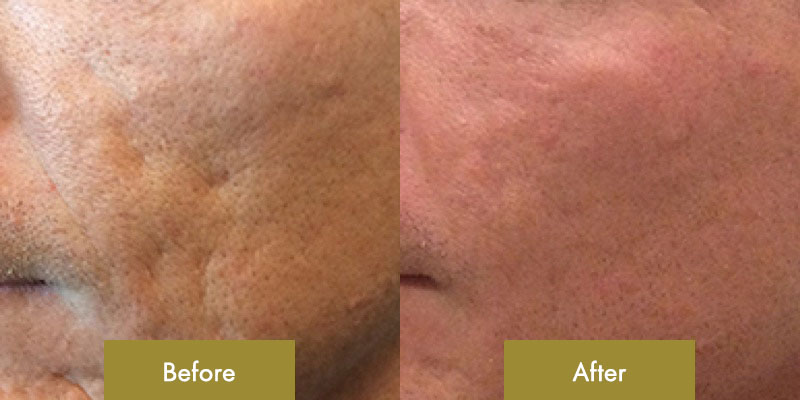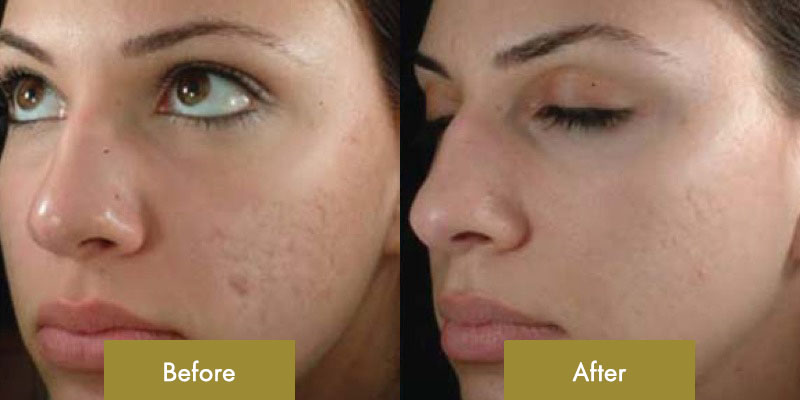Definition
Acne is an inflammatory condition of the nodes that produce sebum, which usually affects adolescents and young adults of both genders. Very often acne leaves behind scars, mainly on the face, but also on the body. Acne scarring is a problem leading to disappointment, especially if the scars appear on the face. However, there are available procedures to treat the scars, which also lead to self-confidence and self-esteem improvement.
What causes acne scars?
Acne scars are most often the product of an inflamed lesion, such as a papule, pustule, or cyst  that has been caused by acne. Inflamed blemishes occur when the follicle, or pore, becomes engorged with excess oil, dead skin cells, and bacteria.
that has been caused by acne. Inflamed blemishes occur when the follicle, or pore, becomes engorged with excess oil, dead skin cells, and bacteria.
The pore swells, causing a break in the follicle wall. If the rupture occurs near the skin’s surface, the lesion is usually minor and heals quickly. More serious lesions arise when there is a deep break in the follicle wall, and the infected material spills out into the dermis and destroys healthy skin tissue.
To repair cutaneous wounds, the skin forms new collagen fibres. Collagen is the fibrous protein that gives skin its strength and elasticity. During the healing process, the body sometimes produces too much collagen, which creates a mass of raised tissue on the skin’s surface. This type of scarring is called hypertrophic, or keloid, scarring.
More commonly, acne causes atrophic scars. Atrophic scars develop when there is a loss of tissue. Ice pick and boxcar scars are two examples of atrophic scars.
Scar development is proportional to inflammation. The greater the inflammation on the skin, the more likely scarring is to occur. Deep breakouts that take a long time to heal also increase the chance of scarring. Blackheads, whiteheads, and other non-inflamed blemishes do not typically cause scarring because these types of lesions do not injure skin tissue. Often, what is taken to be an acne scar is not a true scar at all, but rather post-inflammatory hyperpigmentation. This temporary discoloration of the skin will eventually fade on its own.










